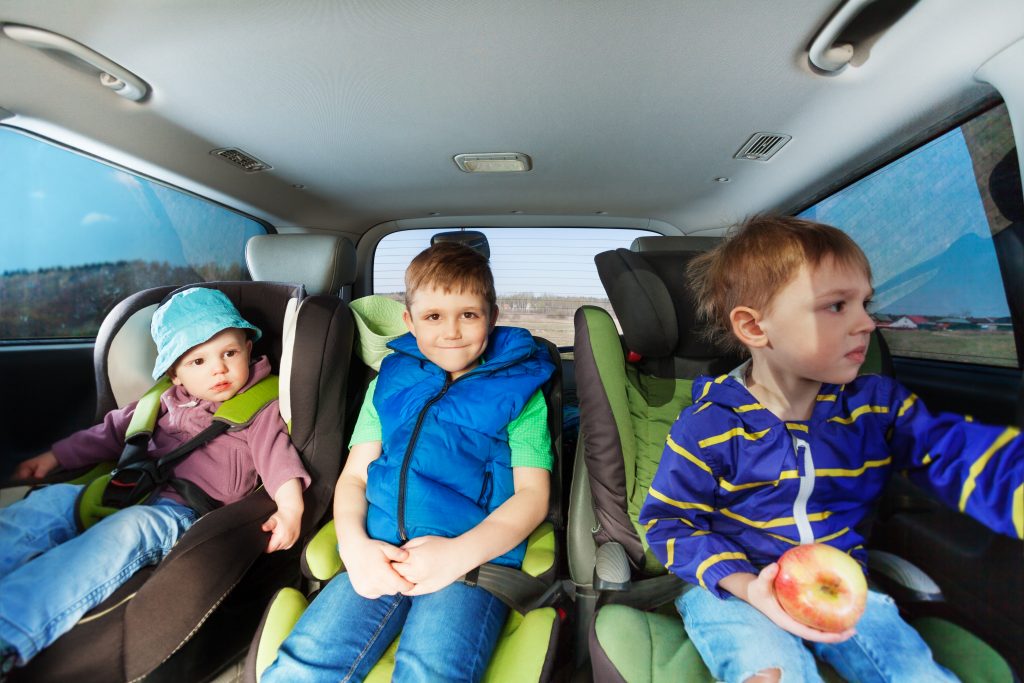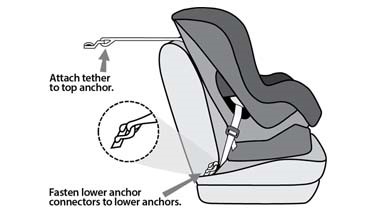Is Your Child’s Car Seat Properly Installed?
Fall is almost here! That means you’ll be shuttling your young ones to daycare and school. And you want them to be safe. Everyone knows that the safest place for children in the car is to be properly belted into a safety seat. Beyond that, though, the seats, sizes, which direction they face and how to install the child car seats in your car gets very confusing. Here’s a primer on child safety seats and installation — with a lot of resources that will help end the confusion.
Types of Car Seats
Rear facing car seats are designed for infants and smaller toddlers. They are installed to face the rear (or seatback) in the vehicle.
Forward facing car seats are designed for older toddlers. These seats face forward, so your toddler can look around the vehicle and/or out the windshield.
Booster seats are designed for children above the toddler stage and into grade school. Booster seats are forward facing and are basically designed to keep the seat belt properly positioned on your child to prevent injuries.

Some child car seats are convertible and can change between rear facing, front facing and booster seats. Also, the age, weight and sometimes height ratings vary between child seats, so be sure to check the manufacturer’s guidelines on any seat you consider.
Generally, all children under seven years old, or 60 pounds in weight, should still use a booster seat. However, laws vary by state. Here is a great resource to find your state’s laws regarding child passenger restraint requirements.
Car Seat Installation Information: Seat Belts And LATCH
First, all car seats should be installed in the back seat. Never install a car seat in the front seat, because an airbag could cause serious injury to your child! If you are forced to use a car seat in the front, for example in a pickup truck, be sure to turn the airbag off.
Most children’s safety seats provide the option of installing with either the standard seat belt or using the vehicle’s LATCH system. LATCH stands for Lower Anchor and Tethers for Children, and nearly every vehicle made since 2002 should be equipped with a LATCH system. With the LATCH system, instead of using the seat belt to secure the child seat, lower anchors are used to attach the seat base. In many instances, it’s easier to use the LATCH system than the seat belt.
However, in some cases, it’s easier to use the vehicle’s seat belts, or the seat fits better and is more secure than using the LATCH system. In these cases, it’s perfectly acceptable to use the seat belt. A child seat that is properly secured with a seat belt is safer than one that is improperly secured with the LATCH system.
If you choose to use your vehicle’s seat belt, make sure the seat belt is locked with a tight fit. In most cars, the seat belt can be locked by pulling it all the way out and then allowing it to retract to keep the seat belt tight around the car seat. Many child seats also have built-in lock-offs to keep the belt tight. Refer to the vehicle owner’s manual for details about how your seat belt locks.
The LATCH system has limitations. Generally, once the child and car seat together exceed 65 pounds, you should no longer use the LATCH system. At that point you should change to using the seat belt to secure the child seat. Check the car safety seat recommendations for the maximum weight a child can be to use lower anchors. New car safety seats have the maximum weight printed on their label. Also, it is not safer to use BOTH the LATCH and seat belts together. Unless the manufacturer specifically recommends it, do not attempt it.
The other half of the LATCH system is the tether. Top tether anchors are located either on the panel behind the seat (in sedans) or on the back of the seat, ceiling or floor in most vans, SUVs and trucks. All forward-facing car safety seats have tether attachments that fasten to these anchors. These tethers keep the seat from moving forward in an accident, dramatically reducing the potential for head, neck and spine injuries. Like the lower latches, the tether also has weight limitations. Consult your vehicle owner’s manual for the highest weight of child allowed to use top tether.

(Source: HealthyChildren) The LATCH system
In general, the car seat is safest in the center position of the back seat. But, just like babies, cars and car seats come in different sizes and shapes. If the car seat does not fit properly in the center position, or cannot be secured properly, use it in a side position. A properly secured seat in the side position is safer than and improperly secured seat in the center position. If the child safety seat does not fit properly in either position, you should return it and try a different manufacturer or model. As frustrating as returning the seat may be, your child’s safety is the most important factor!
If you need more help, check out these other great resources:
NHTSA.gov For help choosing the right seat, information and videos on how to properly install your seat and other great information.
NHTSA.gov To search for help on the installation or a nearby inspection station to make sure you’ve installed the seat correctly.
The Car Seat Lady For great photos showing the many varieties and locations of LATCH anchors:
SaferRid4Kids.com For a list of child seat and restraint laws by state.
And remember, if you are looking for a new family vehicle, stop by Neil Huffman Honda in Frankfort, KY. We’re happy to show you the perfect new – or used – vehicle for your family. We’ll even highlight all the latest safety features that Honda has to offer.




